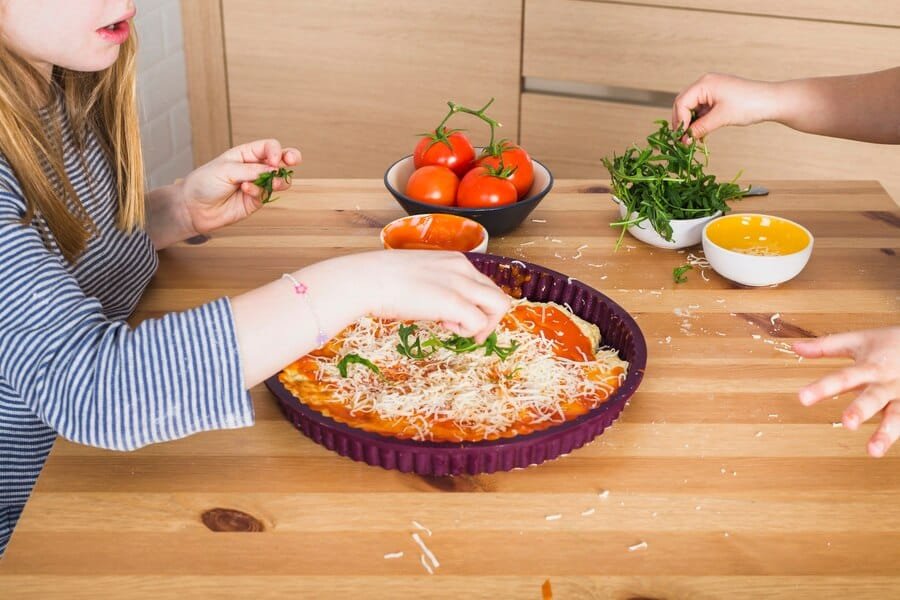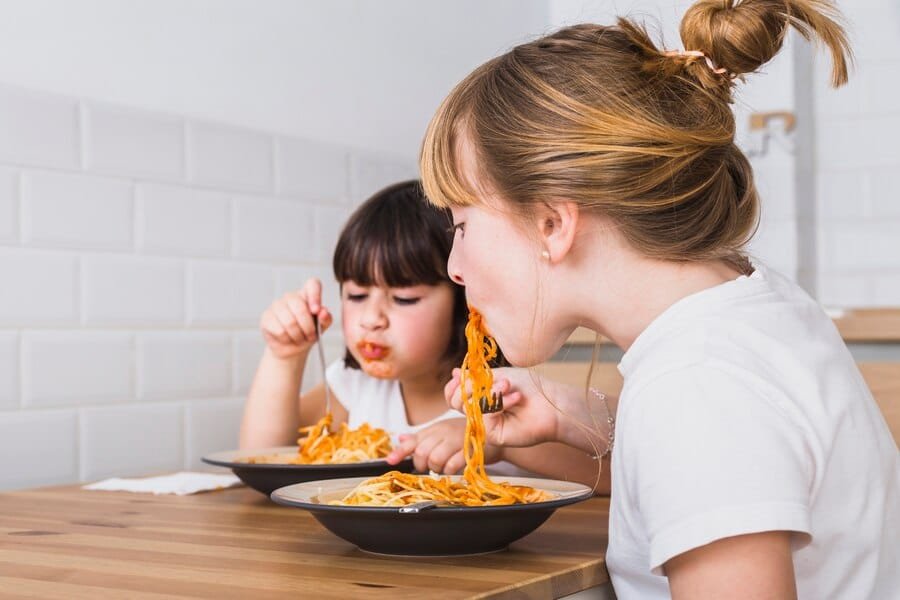
As a parent, finding ways to incorporate vegetables into meals that children will actually enjoy can feel like an endless challenge. Pizza presents the perfect opportunity to combine the foods kids love with essential nutrients they need. Let’s explore creative and delicious ways to make vegetable-rich pizzas that will have children asking for seconds.
Read Also:
- Plant-Based Meals: Your Complete Guide to Sustainable Weight Loss Through Natural Nutrition
- Low-Carb Recipes for Diabetics: A Comprehensive Guide to Healthy and Delicious Meals
- The Ultimate Beginner’s Guide: Foolproof Chocolate Chip Cookies That Always Turn Out Perfect (Even If You’ve Never Baked Before!)
- The Ultimate Guide to Crafting Perfect Flaky Pie Crusts: A Baker’s Secret Recipe and Techniques (2024)
The Magic of Homemade Pizza: A Gateway to Healthy Eating
Making pizza at home isn’t just about creating a meal – it’s an opportunity to involve children in the cooking process and teach them about nutrition. According to the American Academy of Pediatrics, children who participate in meal preparation are more likely to make healthier food choices. Research from the Journal of Nutrition Education and Behavior suggests that kids are more willing to try new vegetables when they’re involved in the cooking process. For inspiration and basic techniques, the Food Network’s guide to pizza-making with kids offers excellent starting points for family-friendly recipes.
Essential Equipment and Base Ingredients
Before diving into specific recipes, having the right tools and ingredients is crucial. While a pizza stone can enhance results, a regular baking sheet works perfectly well. The Mayo Clinic’s nutrition experts recommend using whole wheat flour for added fiber and nutrients. For the basic pizza dough, you’ll need:
- Whole wheat and all-purpose flour (mixed for better texture)
- Active dry yeast
- Warm water
- A pinch of sugar
- Olive oil
- Salt
King Arthur Baking provides an excellent whole wheat pizza dough recipe that’s been tested extensively.
The Art of Vegetable Preparation
The key to successful vegetable incorporation lies in preparation. According to cooking experts at Serious Eats (https://www.seriouseats.com/vegetable-pizza-methods), pre-roasting certain vegetables can enhance their natural sweetness and make them more appealing to young palates. Consider these preparation methods:
For root vegetables like carrots and sweet potatoes, shred them finely and mix directly into the sauce. They’ll cook perfectly during the pizza-making process while remaining virtually undetectable. Bell peppers and onions can be sautéed until caramelized, bringing out their natural sugars. Leafy greens like spinach and kale should be chopped finely and scattered sparingly to prevent overwhelming young taste buds.
Kid-Approved Pizza Recipes
1. Rainbow Pizza Surprise
This visually appealing pizza uses colorful vegetables arranged in a rainbow pattern. According to research published in the Journal of Consumer Psychology, presenting food in fun, visually appealing ways increases children’s willingness to try new items. The recipe incorporates:
- Red: Cherry tomatoes and red bell peppers
- Orange: Carrots and orange bell peppers
- Yellow: Corn and yellow squash
- Green: Broccoli and spinach
- Purple: Purple cauliflower or eggplant
Chef Jamie Oliver offers a similar approach with his rainbow pizza recipe.
2. Hidden Veggie Pizza Sauce
The sauce is an excellent vehicle for incorporating vegetables without changing the pizza’s appearance. This recipe, inspired by Cooking Light’s approach to sneaking vegetables into sauces, includes:
- Roasted red peppers
- Carrots
- Sweet potato
- Traditional tomato base
- Italian herbs
Blend these ingredients until smooth, and spread on the pizza base as normal. The natural sweetness of the vegetables complements the tomato while providing extra nutrients.
3. Garden Patch Pizza
This recipe celebrates vegetables openly but presents them in kid-friendly ways. The USDA’s MyPlate guidelines emphasize the importance of vegetable variety in children’s diets. The toppings include:
- Tiny broccoli “trees”
- Corn “sunshine spots”
- Carrot “flowers” (thinly sliced rounds)
- Bell pepper “hearts” (cut with small cookie cutters)
- Cherry tomato “buttons”
Tips for Success
Making It Interactive
The Cooking with Kids Foundation suggests that allowing children to create their own pizza “masterpieces” increases their investment in the meal. Set up a topping station where kids can choose from pre-prepared vegetables. Consider creating themes or challenges, like “make a face” or “create a garden scene” using vegetable toppings.
Texture Considerations
According to pediatric feeding specialists cited in Parents Magazine, texture can be as important as taste for children. Consider these techniques:
- Pulse vegetables in a food processor for ultra-fine pieces
- Layer vegetables between cheese to make them less noticeable
- Use different cooking methods (roasting, sautéing) to find textures your children prefer
The Power of Presentation
Research from Cornell University’s Food and Brand Lab shows that creative food names can increase children’s consumption of vegetables by 40%. Try these pizza naming strategies:
- Superhero Supreme Pizza
- Monster Truck Veggie Pizza
- Princess Garden Pizza
- Space Explorer Pizza
Nutritional Benefits
The American Dietetic Association emphasizes the importance of introducing vegetables early in life. A well-topped vegetable pizza can provide:
- Vitamin C from bell peppers and broccoli
- Vitamin A from carrots and sweet potatoes
- Iron from spinach
- Fiber from all vegetables
- Calcium from cheese
- Complex carbohydrates from whole wheat crust
For detailed nutritional information, visit the USDA’s Food Data Central.
Common Challenges and Solutions
Picky Eaters
The Child Mind Institute offers valuable insights into dealing with picky eaters. Some effective strategies include:
- Starting with minimal vegetable toppings and gradually increasing
- Mixing new vegetables with familiar favorites
- Maintaining a positive attitude about food choices
- Never forcing or bribing children to eat vegetables
Time Management
For busy families, preparation is key. Many components can be made ahead:
- Pizza dough can be prepared and frozen
- Vegetables can be chopped and stored in containers
- Sauce can be made in large batches and frozen in portions
Looking Forward
As children become more comfortable with vegetables on pizza, gradually introduce new varieties and preparations. The goal is to develop not just acceptance but enthusiasm for nutritious foods. Remember that taste preferences evolve, and consistent exposure to vegetables in positive contexts helps develop healthy eating habits that last a lifetime.
For more recipe inspiration and tips, explore resources from the Academy of Nutrition and Dietetics.
This journey toward healthier eating habits through kid-friendly pizza making is an investment in your children’s future health and relationship with food. By making it fun, interactive, and delicious, you’re teaching valuable lessons about nutrition while creating precious family memories in the kitchen.


